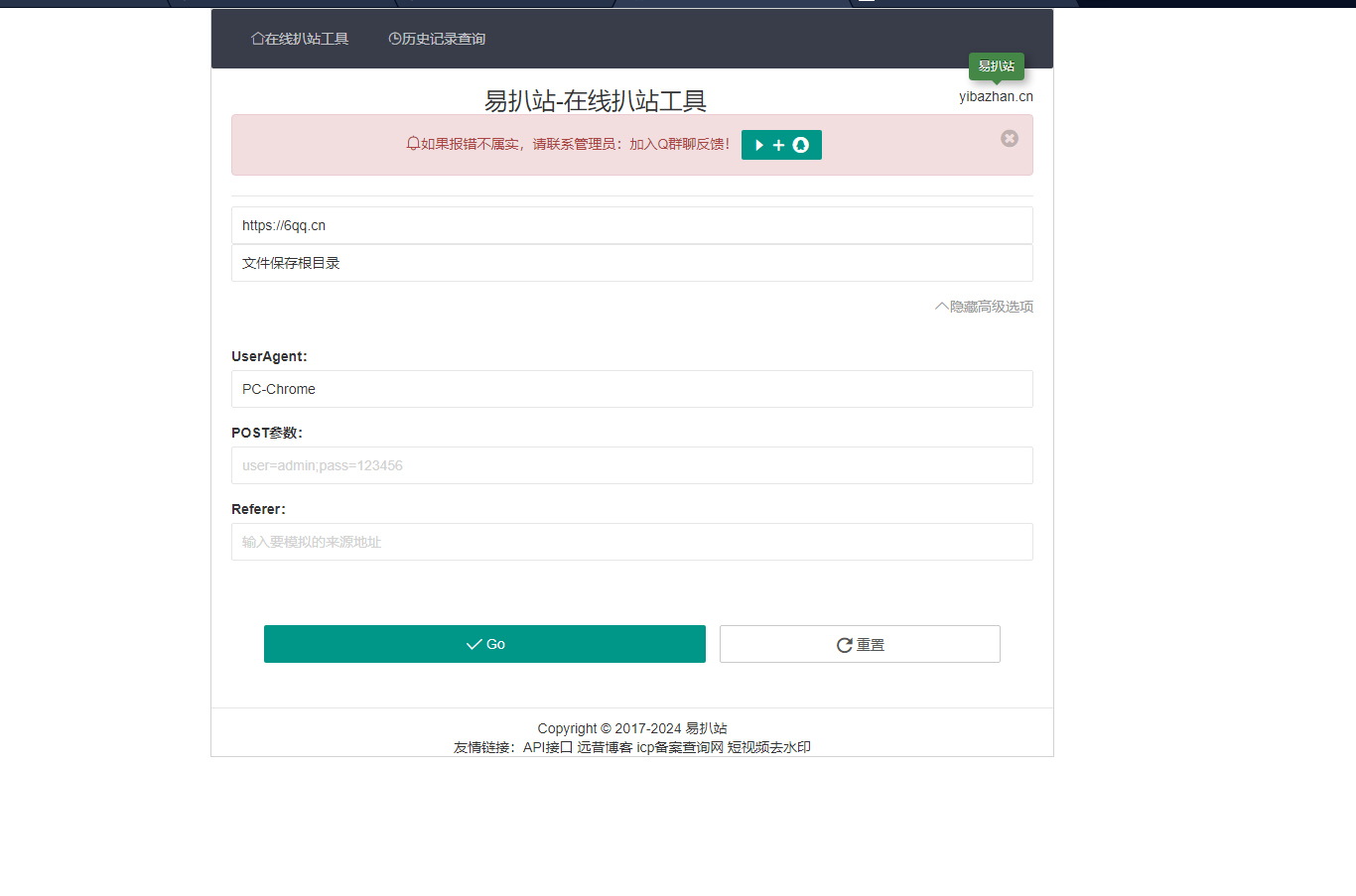processlist命令的輸出結(jié)果顯示了有哪些線程在運(yùn)行,可以幫助識(shí)別出有問題的查詢語(yǔ)句,兩種方式使用這個(gè)命令
1.進(jìn)入mysql/bin目錄下輸入mysqladmin processlist;
2.啟動(dòng)mysql,輸入show processlist;
如果有 SUPER 權(quán)限,則可以看到全部的線程,否則,只能看到自己發(fā)起的線程(這是指,當(dāng)前對(duì)應(yīng)的MySQL帳戶運(yùn)行的線程)。
得到數(shù)據(jù)形式如下(只截取了三條):
mysql> show processlist;
+—–+————-+——————–+——-+———+——-+———————————-+———-
| Id | User | Host | db | Command | Time| State | Info
+—–+————-+——————–+——-+———+——-+———————————-+———-
|207|root |192.168.0.20:51718 |mytest | Sleep | 5 | | NULL
|208|root |192.168.0.20:51719 |mytest | Sleep | 5 | | NULL
|220|root |192.168.0.20:51731 |mytest |Query | 84 | Locked |
select bookname,culture,value,type from book where id=001
先簡(jiǎn)單說一下各列的含義和用途,第一列,id,不用說了吧,一個(gè)標(biāo)識(shí),你要kill一個(gè)語(yǔ)句的時(shí)候很有用。user列,顯示單前用戶,如果不是root,這個(gè)命令就只顯示你權(quán)限范圍內(nèi)的sql語(yǔ)句。host列,顯示這個(gè)語(yǔ)句是從哪個(gè)ip的哪個(gè)端口上發(fā)出的。呵呵,可以用來追蹤出問題語(yǔ)句的用戶。db列,顯示這個(gè)進(jìn)程目前連接的是哪個(gè)數(shù)據(jù)庫(kù)。command列,顯示當(dāng)前連接的執(zhí)行的命令,一般就是休眠(sleep),查詢(query),連接(connect)。time列,此這個(gè)狀態(tài)持續(xù)的時(shí)間,單位是秒。state列,顯示使用當(dāng)前連接的sql語(yǔ)句的狀態(tài),很重要的列,后續(xù)會(huì)有所有的狀態(tài)的描述,請(qǐng)注意,state只是語(yǔ)句執(zhí)行中的某一個(gè)狀態(tài),一個(gè)sql語(yǔ)句,已查詢?yōu)槔赡苄枰?jīng)過copying to tmp table,Sorting result,Sending data等狀態(tài)才可以完成,info列,顯示這個(gè)sql語(yǔ)句
如果你在一個(gè)容量大的表中執(zhí)行增刪改字段或執(zhí)行一個(gè)復(fù)雜的sql 查詢導(dǎo)致mysql線程掛起.可用此命令查看出是哪些sql掛起,用kill命令把他K掉
kill命令使用方法
kill pid
如上例中我們想kill掉id為207的線程則執(zhí)行
kill 207即可.
mysql show processlist命令 詳解
顯示哪些線程正在運(yùn)行。您也可以使用語(yǔ)句得到此信息。如果您有權(quán)限,您可以看到所有線程。否則,您只能看到您自己的線程(也就是,與您正在使用的賬戶相關(guān)的線程)。請(qǐng)參見。如果您不使用關(guān)鍵詞,則只顯示每個(gè)查詢的前個(gè)字符。
本語(yǔ)句報(bào)告連接的主機(jī)名稱(采用格式),以方便地判定哪個(gè)客戶端正在做什么。
如果您得到“”錯(cuò)誤信息,并且想要了解正在發(fā)生的情況,本語(yǔ)句是非常有用的。保留一個(gè)額外的連接,讓擁有權(quán)限的 賬戶使用,以確保管理員能夠隨時(shí)連接和檢查系統(tǒng)(假設(shè)您沒有把此權(quán)限給予所有的用戶)。
這個(gè)命令中最關(guān)鍵的就是state列,mysql列出的狀態(tài)主要有以下幾種:
Checking table
正在檢查數(shù)據(jù)表(這是自動(dòng)的)。
Closing tables
正在將表中修改的數(shù)據(jù)刷新到磁盤中,同時(shí)正在關(guān)閉已經(jīng)用完的表。這是一個(gè)很快的操作,如果不是這樣的話,就應(yīng)該確認(rèn)磁盤空間是否已經(jīng)滿了或者磁盤是否正處于重負(fù)中。
Connect Out
復(fù)制從服務(wù)器正在連接主服務(wù)器。
Copying to tmp table on disk
由于臨時(shí)結(jié)果集大于tmp_table_size,正在將臨時(shí)表從內(nèi)存存儲(chǔ)轉(zhuǎn)為磁盤存儲(chǔ)以此節(jié)省內(nèi)存。
Creating tmp table
正在創(chuàng)建臨時(shí)表以存放部分查詢結(jié)果。
deleting from main table
服務(wù)器正在執(zhí)行多表刪除中的第一部分,剛刪除第一個(gè)表。
deleting from reference tables
服務(wù)器正在執(zhí)行多表刪除中的第二部分,正在刪除其他表的記錄。
Flushing tables
正在執(zhí)行FLUSH TABLES,等待其他線程關(guān)閉數(shù)據(jù)表。
Killed
發(fā)送了一個(gè)kill請(qǐng)求給某線程,那么這個(gè)線程將會(huì)檢查kill標(biāo)志位,同時(shí)會(huì)放棄下一個(gè)kill請(qǐng)求。MySQL會(huì)在每次的主循環(huán)中檢查kill標(biāo)志位,不過有些情況下該線程可能會(huì)過一小段才能死掉。如果該線程程被其他線程鎖住了,那么kill請(qǐng)求會(huì)在鎖釋放時(shí)馬上生效。
Locked
被其他查詢鎖住了。
Sending data
正在處理SELECT查詢的記錄,同時(shí)正在把結(jié)果發(fā)送給客戶端。
Sorting for group
正在為GROUP BY做排序。
Sorting for order
正在為ORDER BY做排序。
Opening tables
這個(gè)過程應(yīng)該會(huì)很快,除非受到其他因素的干擾。例如,在執(zhí)ALTER TABLE或LOCK TABLE語(yǔ)句行完以前,數(shù)據(jù)表無法被其他線程打開。正嘗試打開一個(gè)表。
Removing duplicates
正在執(zhí)行一個(gè)SELECT DISTINCT方式的查詢,但是MySQL無法在前一個(gè)階段優(yōu)化掉那些重復(fù)的記錄。因此,MySQL需要再次去掉重復(fù)的記錄,然后再把結(jié)果發(fā)送給客戶端。
Reopen table
獲得了對(duì)一個(gè)表的鎖,但是必須在表結(jié)構(gòu)修改之后才能獲得這個(gè)鎖。已經(jīng)釋放鎖,關(guān)閉數(shù)據(jù)表,正嘗試重新打開數(shù)據(jù)表。
Repair by sorting
修復(fù)指令正在排序以創(chuàng)建索引。
Repair with keycache
修復(fù)指令正在利用索引緩存一個(gè)一個(gè)地創(chuàng)建新索引。它會(huì)比Repair by sorting慢些。
Searching rows for update
正在講符合條件的記錄找出來以備更新。它必須在UPDATE要修改相關(guān)的記錄之前就完成了。
Sleeping
正在等待客戶端發(fā)送新請(qǐng)求.
System lock
正在等待取得一個(gè)外部的系統(tǒng)鎖。如果當(dāng)前沒有運(yùn)行多個(gè)mysqld服務(wù)器同時(shí)請(qǐng)求同一個(gè)表,那么可以通過增加–skip-external-locking參數(shù)來禁止外部系統(tǒng)鎖。
Upgrading lock
INSERT DELAYED正在嘗試取得一個(gè)鎖表以插入新記錄。
Updating
正在搜索匹配的記錄,并且修改它們。
User Lock
正在等待GET_LOCK()。
Waiting for tables
該線程得到通知,數(shù)據(jù)表結(jié)構(gòu)已經(jīng)被修改了,需要重新打開數(shù)據(jù)表以取得新的結(jié)構(gòu)。然后,為了能的重新打開數(shù)據(jù)表,必須等到所有其他線程關(guān)閉這個(gè)表。以下幾種情況下會(huì)產(chǎn)生這個(gè)通知:FLUSH TABLES tbl_name, ALTER TABLE, RENAME TABLE, REPAIR TABLE, ANALYZE TABLE,或OPTIMIZE TABLE。
waiting for handler insert
INSERT DELAYED已經(jīng)處理完了所有待處理的插入操作,正在等待新的請(qǐng)求。
大部分狀態(tài)對(duì)應(yīng)很快的操作,只要有一個(gè)線程保持同一個(gè)狀態(tài)好幾秒鐘,那么可能是有問題發(fā)生了,需要檢查一下。
還有其他的狀態(tài)沒在上面中列出來,不過它們大部分只是在查看服務(wù)器是否有存在錯(cuò)誤是才用得著。
mysql 查看當(dāng)前連接數(shù)
After create
This occurs when the thread creates a table (including internal temporary tables), at the end of the function that creates the table. This state is used even if the table could not be created due to some error.
Analyzing
The thread is calculating a MyISAM table key distributions (for example, for ANALYZE TABLE).
checking permissions
The thread is checking whether the server has the required privileges to execute the statement.
Checking table
The thread is performing a table check operation.
cleaning up
The thread has processed one command and is preparing to free memory and reset certain state variables.
closing tables
The thread is flushing the changed table data to disk and closing the used tables. This should be a fast operation. If not, you should verify that you do not have a full disk and that the disk is not in very heavy use.
converting HEAP to MyISAM
The thread is converting an internal temporary table from a MEMORY table to an on-disk MyISAM table.
copy to tmp table
The thread is processing an ALTER TABLE statement. This state occurs after the table with the new structure has been created but before rows are copied into it.
Copying to group table
If a statement has different ORDER BY and GROUP BY criteria, the rows are sorted by group and copied to a temporary table.
Copying to tmp table
The server is copying to a temporary table in memory.
Copying to tmp table on disk
The server is copying to a temporary table on disk. The temporary result set was larger than tmp_table_size and the thread is changing the temporary table from in-memory to disk-based format to save memory.
Creating index
The thread is processing ALTER TABLE … ENABLE KEYS for a MyISAM table.
Creating sort index
The thread is processing a SELECT that is resolved using an internal temporary table.
creating table
The thread is creating a table. This includes creation of temporary tables.
Creating tmp table
The thread is creating a temporary table in memory or on disk. If the table is created in memory but later is converted to an on-disk table, the state during that operation will be Copying to tmp table on disk.
deleting from main table
The server is executing the first part of a multiple-table delete. It is deleting only from the first table, and saving columns and offsets to be used for deleting from the other (reference) tables.
deleting from reference tables
The server is executing the second part of a multiple-table delete and deleting the matched rows from the other tables.
discard_or_import_tablespace
The thread is processing an ALTER TABLE … DISCARD TABLESPACE or ALTER TABLE … IMPORT TABLESPACE statement.
end
This occurs at the end but before the cleanup of ALTER TABLE, CREATE VIEW, DELETE, INSERT, SELECT, or UPDATE statements.
executing
The thread has begun executing a statement.
Execution of init_command
The thread is executing statements in the value of the init_command system variable.
freeing items
The thread has executed a command. This state is usually followed by cleaning up.
Flushing tables
The thread is executing FLUSH TABLES and is waiting for all threads to close their tables.
FULLTEXT initialization
The server is preparing to perform a natural-language full-text search.
init
This occurs before the initialization of ALTER TABLE, DELETE, INSERT, SELECT, or UPDATE statements.
Killed
Someone has sent a KILL statement to the thread and it should abort next time it checks the kill flag. The flag is checked in each major loop in MySQL, but in some cases it might still take a short time for the thread to die. If the thread is locked by some other thread, the kill takes effect as soon as the other thread releases its lock.
Locked
The query is locked by another query.
logging slow query
The thread is writing a statement to the slow-query log.
NULL
This state is used for the SHOW PROCESSLIST state.
login
The initial state for a connection thread until the client has been authenticated successfully.
Opening tables, Opening table
The thread is trying to open a table. This is should be very fast procedure, unless something prevents opening. For example, an ALTER TABLE or a LOCK TABLE statement can prevent opening a table until the statement is finished.
preparing
This state occurs during query optimization.
Purging old relay logs
The thread is removing unneeded relay log files.
query end
This state occurs after processing a query but before the freeing items state.
Reading from net
The server is reading a packet from the network.
Removing duplicates
The query was using SELECT DISTINCT in such a way that MySQL could not optimize away the distinct operation at an early stage. Because of this, MySQL requires an extra stage to remove all duplicated rows before sending the result to the client.
removing tmp table
The thread is removing an internal temporary table after processing a SELECT statement. This state is not used if no temporary table was created.
rename
The thread is renaming a table.
rename result table
The thread is processing an ALTER TABLE statement, has created the new table, and is renaming it to replace the original table.
Reopen tables
The thread got a lock for the table, but noticed after getting the lock that the underlying table structure changed. It has freed the lock, closed the table, and is trying to reopen it.
Repair by sorting
The repair code is using a sort to create indexes.
Repair done
The thread has completed a multi-threaded repair for a MyISAM table.
Repair with keycache
The repair code is using creating keys one by one through the key cache. This is much slower than Repair by sorting.
Rolling back
The thread is rolling back a transaction.
Saving state
For MyISAM table operations such as repair or analysis, the thread is saving the new table state to the .MYI file header. State includes information such as number of rows, the AUTO_INCREMENT counter, and key distributions.
Searching rows for update
The thread is doing a first phase to find all matching rows before updating them. This has to be done if the UPDATE is changing the index that is used to find the involved rows.
Sending data
The thread is processing rows for a SELECT statement and also is sending data to the client.
setup
The thread is beginning an ALTER TABLE operation.
Sorting for group
The thread is doing a sort to satisfy a GROUP BY.
Sorting for order
The thread is doing a sort to satisfy a ORDER BY.
Sorting index
The thread is sorting index pages for more efficient access during a MyISAM table optimization operation.
Sorting result
For a SELECT statement, this is similar to Creating sort index, but for nontemporary tables.
statistics
The server is calculating statistics to develop a query execution plan.
System lock
The thread is going to request or is waiting for an internal or external system lock for the table. If this state is being caused by requests for external locks and you are not using multiple mysqld servers that are accessing the same tables, you can disable external system locks with the –skip-external-locking option. However, external locking is disabled by default, so it is likely that this option will have no effect. For SHOW PROFILE, this state means the thread is requesting the lock (not waiting for it).
Table lock
The next thread state after System lock. The thread has acquired an external lock and is going to request an internal table lock.
Updating
The thread is searching for rows to update and is updating them.
updating main table
The server is executing the first part of a multiple-table update. It is updating only the first table, and saving columns and offsets to be used for updating the other (reference) tables.
updating reference tables
The server is executing the second part of a multiple-table update and updating the matched rows from the other tables.
User lock
The thread is going to request or is waiting for an advisory lock requested with a GET_LOCK() call. For SHOW PROFILE, this state means the thread is requesting the lock (not waiting for it).
Waiting for tables, Waiting for table
The thread got a notification that the underlying structure for a table has changed and it needs to reopen the table to get the new structure. However, to reopen the table, it must wait until all other threads have closed the table in question.
This notification takes place if another thread has used FLUSH TABLES or one of the following statements on the table in question: FLUSH TABLES tbl_name, ALTER TABLE, RENAME TABLE, REPAIR TABLE, ANALYZE TABLE, or OPTIMIZE TABLE.
Waiting on cond
A generic state in which the thread is waiting for a condition to become true. No specific state information is available.
Writing to net
The server is writing a packet to the network.
.jpg)
















.png)
